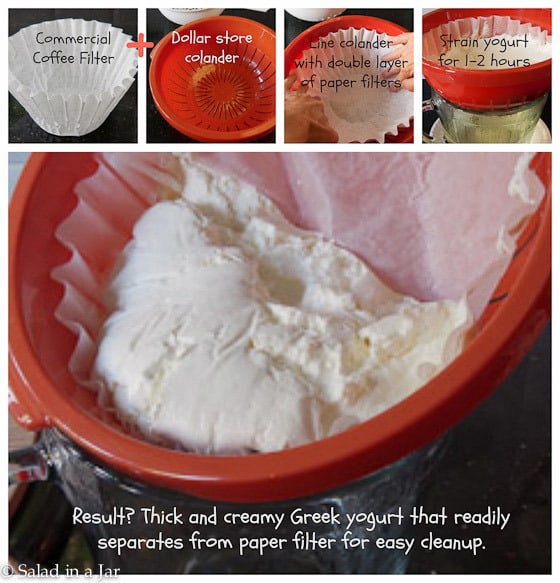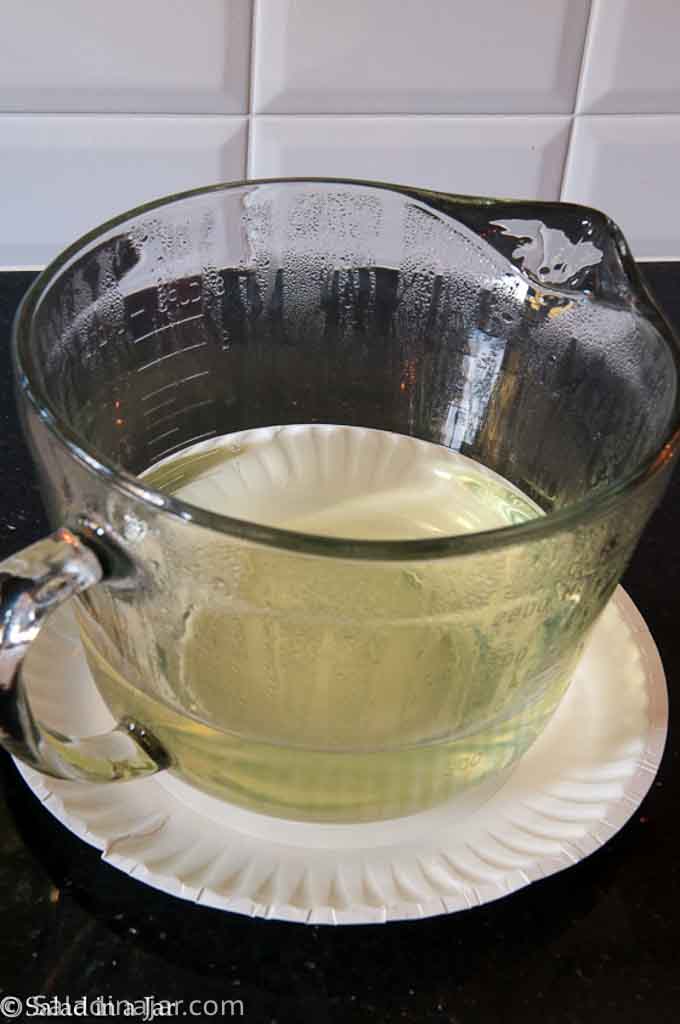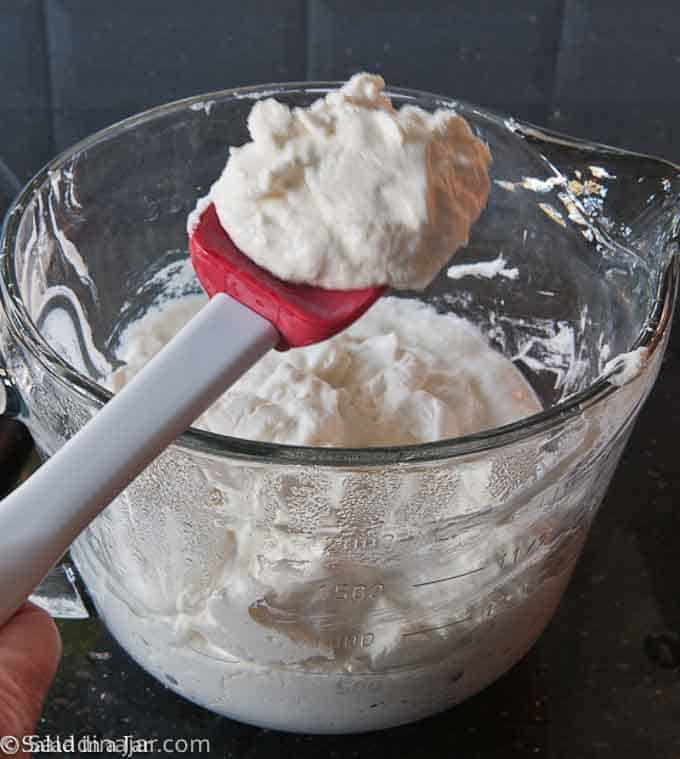How To Strain Yogurt with Paper Coffee Filters–Not Cheesecloth
Sneak Preview: Learn how to strain yogurt with paper coffee filters and a dollar-store plastic colander to separate the whey from regular yogurt and transform it into Greek yogurt. It’s much less messy than cheesecloth and does a better job.

As an Amazon Associate, I earn from qualifying purchases.
Some people say using cheesecloth to strain yogurt is not that much trouble. I’m afraid I have to disagree. Yep! I’ll admit to loving shortcuts and even a bit of laziness when it comes to kitchen clean-up. I would rather spend time at the cutting board or the stove.
You can save time and money by using paper coffee filters to strain regular yogurt and transform it into Greek yogurt. No messy cheesecloth or expensive equipment is required!
Happy Cooks Speak Up
I also really appreciate the coffee filter idea for straining! I did cheesecloth the first time, and like you, I said no way will I be doing that again. I went and bought the big coffee filters and it was a breeze!! The yogurt slid right into my container, and was nice and thick. I’ve been using nonfat milk so I was excited that I got it to thicken it up. —JAN O.
Why I Don’t Strain Yogurt with Cheesecloth
Because you have to…
- Scrape it (Although you don’t always have to do this. But if you do, well…WHAT A MESS!)
- Rinse it
- Wash it
- Dry it
- Fold it
- Store it
- Own several pieces of cheesecloth if you make a lot of yogurt (1 1/2 gallons) at once, as I do.
No, thank you. I prefer a disposable solution or a dishwasher for the task.
My go-to straining system has always been a high-quality bouillon strainer, but my favorite one is pricey. Typically, it works great until you make a batch of thin yogurt that flows right through it (sad face).
Recently, a reader named Doreen left this comment detailing her method of straining yogurt:
“I wanted to say I found a great way to strain. Although I bought a fine-mesh sieve, for some reason it stopped working as well- maybe dishwasher damaged it, not sure. Instead, I bought some institutional-size coffee filters and placed them inside a standard-sized colander. It will strain all 2 quarts in your recipe. Then I put the colander inside a mixing bowl and top it with the same lid that I incubated my casserole dish of yogurt. Finally, I put the whole straining set up in the fridge and leave it for a few hours. When it is thick enough it pulls right away from the filter. The whey is perfectly clear so there is no loss of yogurt. Thank you again for homemade goodness!”
Doreen
Thank you for writing, Doreen. You are a genius! You changed my yogurt-making process for the better.
What I Didn’t Realize About Using Coffee Filters To Make Greek Yogurt
To those who have already written to me suggesting coffee filters: I assumed you were talking about the little ones I use every morning to make coffee. It would take me forever to strain a gallon of yogurt with that size filter.
Being a woman of action, I looked for large paper filters the day I read about Doreen’s method. My local restaurant supply stocks 13 x 5-inch filters designed for a 1-1/2 gallon coffee brewer. Purchase them here(paid link) if you like.
In addition to the coffee filters, you will need a colander. Again, the dollar-store variety works just fine.
Here’s a tip: Use the basket part of your lettuce spinner.

Want To Know the Best Part About Using Coffee Filters?
- No solids are lost (see picture above).
- Paper filters are disposable.
- It’s inexpensive. For example, my cost was $1 plus tax for the orange colander and less than 3 cents per filter. I use two filters to make a double layer for ease of handling yogurt.
- Strained yogurt easily separates from the paper filter for quick clean-up.
- A cheap colander or a colander-substitute works fine to hold the paper filter.
- Strain 2 quarts of yogurt at a time using 13 x 5-inch size filter(paid link).

p.s. I do not put my yogurt in the fridge when straining the whey. Contrary to what Doreen does, I leave it on the counter.
In my experience, yogurt strains faster at room temperature. Besides, who has room in the fridge for the whole setup? If you do, go ahead.
The yogurt is acidic enough to sit safely on the counter for several hours. In my mind, it makes the most sense to strain immediately after incubating.
If you have questions or suggestions, email me privately for a quick answer: Paula at saladinajar.com. Hope to see you again soon!



Paula Rhodes, owner
As a retired home economist, I created Saladinajar.com to share my belief that you don’t have to be a chef to find joy in creating homemade food worth sharing. Bread machines (used in an unconventional way), homemade yogurt, and quick microwave recipes are my specialty.